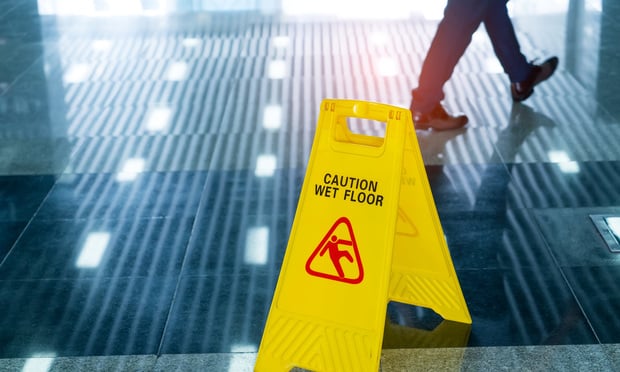You've probably heard that sitting is the new smoking. Actually, that's a bit of a misnomer.
It's not the sitting in and of itself that is the problem, it's the sedentary lifestyle many people lead.
The complete lack of movement is causing a variety of health problems — and upping the number and costs of workers' compensation claims.
Related: Atlanta Hawk: How Cherokee County, Ga.'s HR manager created a culture of safety
Constant movement and good posture are needed to reduce the increased morbidity and mortality from sitting. Employers who understand this and implement simple, inexpensive changes in their workplaces can make a significant impact on the health and well-being of their employees — and reduce their overall healthcare and workers' compensation costs.
The problem
“Sitting is more dangerous than smoking, kills more people than HIV, and is more treacherous than parachuting. We are sitting ourselves to death.”
In his 2014 comment, the Mayo Clinic's Dr. James Levine sought to draw attention to the problem of prolonged sitting. Health experts had known about the conditions associated with non-movement for years, but Levine's words caught on with the masses.
Taking 10,000 steps per day has become the new mantra for many people trying to get or stay fit; it equates to about 5 miles. Some people do more than that, depending on their goals. But many people who don't take action to counteract their sedentary lifestyles find themselves with unexplainable pain and discomfort.
“Your hip flexors and hamstring muscles get tight; you start to have back issues. The decreased mobility leads to weakness in the muscles, you get low back pain,” said Daniel Sanchez, vice president of Operations for OnSite Physio, and a physical therapist by background. “People sit all day and don't move. Then they develop these problems and don't know what to attribute them to; they can't pinpoint where it's coming from. They are just not thinking about their prolonged sitting.”
Related: 10 ways to reduce slips, trips and falls in your business

The increase in lower back injuries can be traced to today's sedentary lifestyle. (Photo: iStock)
Ailments
The list of physical problems at least partly attributable to sedentary living is long. In addition to conditions you might expect, such as low back pain, strained neck and shoulders, and hip pain, there are a variety of others that have been linked to long-term sitting.
Related: Reduce ergonomic injuries by changing your work environment
“A sedentary lifestyle is the single biggest risk factor for cancers, cardiac disease, diabetes — you name it,” said Dr. Teresa Bartlett, senior vice president, medical officer at Sedgwick. Also on the list of conditions associated with prolonged non-movement are brain decline, depression, varicose veins, weak bones, and digestion problems, to name a few.
“The statistics by the National Institute of Occupational Safety and Health say in developed countries, including the U.S., people sit for an average of six-and-a-half to eight hours a day; that's about 55% of their day being sedentary,” Bartlett said. “Even if those people work out, it doesn't mitigate the risk.”
The physical problems connected to physical inaction translate to mounting healthcare costs. Workers' compensation payers can directly attribute some of their expenses to sedentary behaviors.
“From an injury perspective, we've seen repetitive stress injuries — repeated physical movements that can damage tendons, muscles, nerves in the back, shoulders and arms — the upper extremities,” said Jean Brajuha, vice president of operations for Restore Rehabilitation. “With upper extremity issues, a lot has to do with workstation set-up and how well that is designed for that person. If you're in a sedentary manner and not walking for long periods of time, not lifting a lot — that's what sedentary is classified as — you're still in a situation where you are using your upper body. On an assembly line, for example, we see a lot of those issues.”
Brajuha works closely with older workers who have developed such issues over time and eventually are unable to do jobs they have held for years or even decades. Sometimes job modifications can be made, but often that's not the case.
“In vocational placement, you are then trying to help someone over 50 change his career and look for a different type of position,” she said. “It's quite a bit of a challenge finding a good job for someone who is making a change so late in life.”
Related: Nations Roof: Workers' comp reaches a new level
The research
A new study provided strong evidence that being sedentary leads to mobility loss in older age. The retrospective study, published in the Journals of Gerontology: Medical Science, found that older people who spent more than five hours a day watching TV and fewer than three hours in physical activity per week increased their risk of mobility disability by 65%.
“Our findings indicate that sedentary time is a potent risk factor for mobility loss in older age that is independent of light-intensity and moderate- to vigorous-intensity physical activity, as well as sex, educational attainment, smoking, and prevailing health status,” the authors said.
But changing lifestyles are expanding the group of people affected. Increasingly, more young workers have the same problems.
“Think about how long these younger workers have been on computers and video games for hours on end before getting into the work environment. By the time they get to work they've reached the age where they've already been working all those muscles and tendons — overworking them a long time,” said Sebastian Grasso president/founder of Windham Group, a case management company “They file workers' compensation claims; but you can push back, since they've been on computers for 5 hours a day [before they started working].”
Related: Sit up straight: Millennials, safety and ergonomics

Some companies are providing office workers with standing desks. (Photo: iStock)
Getting workers to move
Movement is the key to prevent ailments caused by staying in one position too long. Employers are beginning to use a variety of tactics to encourage workers to increase their mobility.
“We tell them to set up copiers and printers as far away as possible; don't give everybody a printer on their desks,” Grasso said. “That encourages movement and getting out of the work environment.”
Establishing walking meetings and encouraging workers to walk over to colleagues to speak with them directly instead of emailing are other ways employers are encouraging mobility.
Related: Treating the whole worker in your RTW program
“What I'm seeing is a big movement with our clients to have walking trails around pathways, even on the carpet or stairs, that tell people the distance and how often,” Bartlett said. “Also, at least three of our large clients actually have the treadmill workstation. It's got a 2-mph governor on it, a docking station and a phone hookup where you can put the headset on and walk, type and talk. There are several clients who have adopted their conference rooms with these.”
Although sit-stand desks are effective and popular, they can be cost prohibitive for some employers. Many companies have installed a handful of these throughout the workspace for employees to use when they want a break from sitting.
A rule of thumb from the experts is to at least take a five-minute break for each hour of sitting. That can help the body and clear the mind too.
“Standing breaks and taking a minute to stretch are effective,” Sanchez said. “There are even some computer programs that will freeze the monitor unless the worker stops and takes a stretch break.”
Related: Using IoT to improve safety and reduce claims
Nancy Grover is the founder and president of NMG Consulting, a media/communications entity based in Florida. She can be reached at [email protected].
Want to continue reading?
Become a Free PropertyCasualty360 Digital Reader
Your access to unlimited PropertyCasualty360 content isn’t changing.
Once you are an ALM digital member, you’ll receive:
- Breaking insurance news and analysis, on-site and via our newsletters and custom alerts
- Weekly Insurance Speak podcast featuring exclusive interviews with industry leaders
- Educational webcasts, white papers, and ebooks from industry thought leaders
- Critical converage of the employee benefits and financial advisory markets on our other ALM sites, BenefitsPRO and ThinkAdvisor
Already have an account? Sign In Now
© 2025 ALM Global, LLC, All Rights Reserved. Request academic re-use from www.copyright.com. All other uses, submit a request to [email protected]. For more information visit Asset & Logo Licensing.








